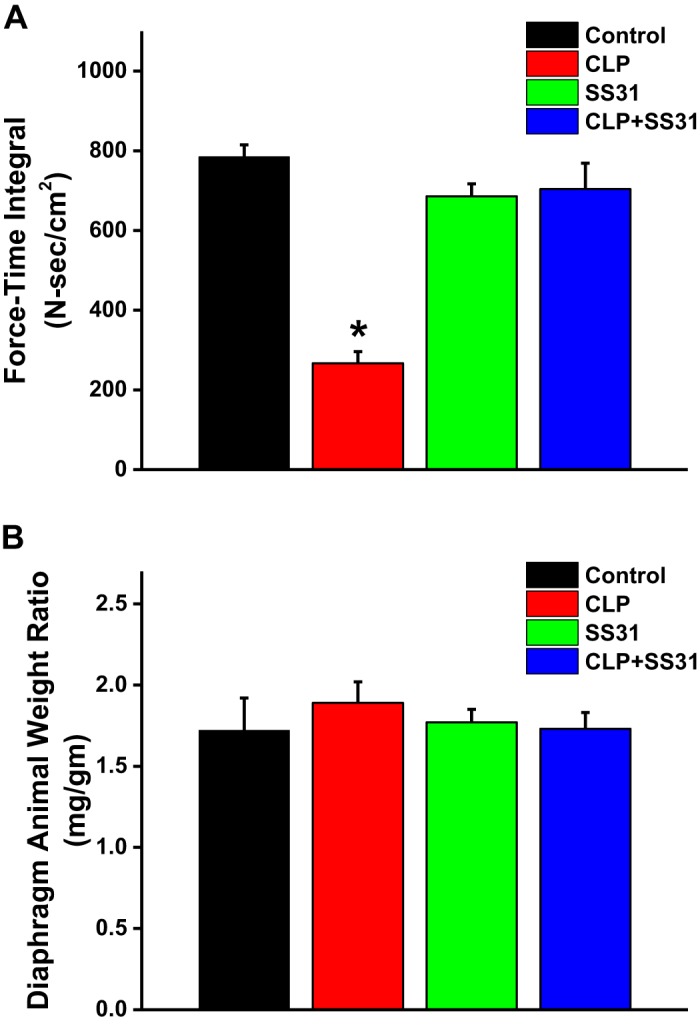Fig. 5.

Force-time integrals for diaphragm fatigue curves for the 4 experimental groups in A. Ability of the diaphragm to maintain force generation over time during a fatiguing, repetitive direct muscle stimulation trial was substantially lower for muscles taken from septic animals [i.e., the cecal ligation puncture (CLP) group] than for sham controls (P < 0.001 for comparison of these 2 groups). SS31 prevented this sepsis-induced reduction in force maintenance, with the force-time integral for the CLP+SS31-treated group similar to the sham controls and significantly higher than the value for the CLP septic animals (P < 0.001 for this latter comparison). B shows group mean data ±1 SE for the diaphragm weight-to-animal weight ratios for sham controls (black) and CLP sepsis (red), sham+SS31 (green), and CLP+SS31 (blue) groups. This ratio was similar for the 4 groups (not significant for all comparisons). These data indicate that loss of specific diaphragm force in response to CLP-induced sepsis in the current study was not associated with a generalized loss of diaphragm muscle mass under the conditions tested. *Statistical significance; n = 5–6 mice per group.
